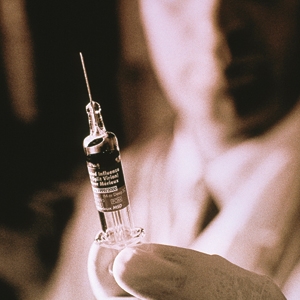The recent announcement by the CQC on their findings following GP practice inspections has raised considerable concern about the handling of medicines and cleanliness.
Among the failures found in some of the inspected GP practices, 80% of which had been targeted after previously known problems, wasvaccine storage in fridges lacking proper temperature regulation. This could reduce administration effectiveness and cause disease outbreak, also resulting in waste and unnecessary costs to GP practices and the NHS. These seven tips explain best practice for keeping your vaccines safely.
1 Maintain the cold chain from receipt until administration
The ‘cold chain’ or cold temperature conditions in which a product has to be kept during storage and throughout distribution needs to be maintained until the point of administration. The conditions are according to the manufacturer’s recommendations, usually within the range of +2˚C to +8˚C for refrigerated vaccines; -15°C to -50°C for vaccines requiring freezer storage.
Advice on temperature stability can be obtained from pharmacists in the local provider or commissioning organisation (e.g. medicines management team) or The fridge database, maintained by the UK Medicines Information (UKMi), available at www.ukmi.nhs.uk/applications/fridge(access for NHS staff and contractors can be obtained by contacting the regional medicines information centre – telephone numbers are in the British National Formulary (BNF)).
2 Monitor and manage vaccine stock
Have a named person responsible for ensuring a good monitoring and management system of the vaccine stock. A vaccine audit should be performed monthly by a named staff member.
Ordering of vaccine stock should be by designated staff to ensure there is always adequate supply while avoiding overstocking. Excess stock leads to wastage, increased disposal costs and increases the risk of administering out-of-date vaccines.
3 Ensure proper storage of all vaccine products
A named staff member should ensure vaccines are stored according to the manufacturer’s summary of product characteristics (SPC), usually at +2˚C to +8˚C for refrigerated and -15°C to -50°C for freezer storage and protected from light. Although immunoglobulin products have a tolerance to ambient temperatures (up to 25˚C) for up to one week, they should be refrigerated immediately on receipt.
All maintenance actions should be recorded on a log sheet that is kept with the vaccine refrigerator.
4 Reduce vaccines and medicines wastage
Prevent waste of refrigerated medicines and vaccines by always referring to:
- Relevant sections of the manufacturers’ summaries of product characteristics (SPC), available in The fridge database or at www.medicines.org.uk/emc
- Manufacturers’ medical information departments
5 Monitor daily the refrigerator temperature using the ‘four Rs’
Practices should have several named members of staff who regularly read and record vaccine refrigerator temperatures, twice daily at a minimum on a normal working day. Software is available for recording this data but it can be done manually, and using the ‘four Rs’ facilitates the process:
- Read daily the thermometer’s maximum, minimum and current temperatures
- Record temperatures on a standard form, signing each entry on the recording sheet
- Reset the thermometer after each reading, and also when temperatures have stabilised after periods of high activity
- React taking action if the temperature falls outside the manufacturer storage requirements, and document this action
6 Have a plan for fridge failure or disruption of the cold chain
- Some effective contingency measures are:
- Regular electrical testing of the fridge
- Clear tagging of the plug or switch socket used to power the fridge
- Use of lockable fridges with an alarm system to prevent doors being left open
- Availability of multiple vaccine fridges, in the event one fails
- Consideration of a wireless monitoring solution
Maintaining a good working relationship with other local practices will prove to be helpful in case of an emergency, if they can temporarily lend storage space.
Finally, if a vaccine storage error does occur, follow the Health Protection Agency’s (HPA) Vaccine Incident Guidance.
7 Develop a standard for receipt of vaccines
Although this tip is not always realistic in most busy practices, ideally 100% of vaccines should be checked on arrival for any damage or leakage. Ensure there are designated personnel in charge of recording expiry date, dosage and any discrepancies on receipt of a delivery, so that problems can be immediately reported to the supplier.
Dr Naomi Selvadurai is a GP in Stevenage.
Further reading
Department of Health. Protocol for ordering, storing and handling vaccines
RCGP. Response to CQC announcement on GP practice inspections.
Health Protection Agency (HPA). Vaccine Incident Guidance.
Thermo Fisher Scientific. Vaccine storage guide.
UK Medicines Information (UKMi). The fridge database.
Pulse October survey
Take our July 2025 survey to potentially win £1.000 worth of tokens













